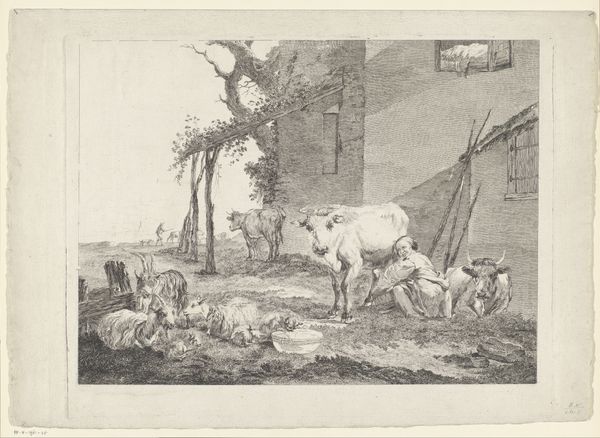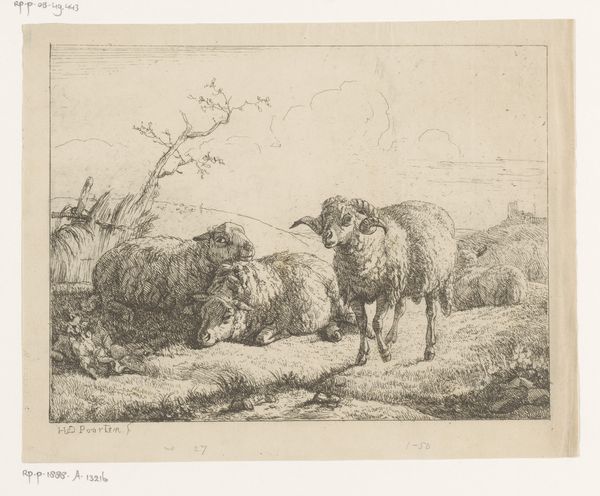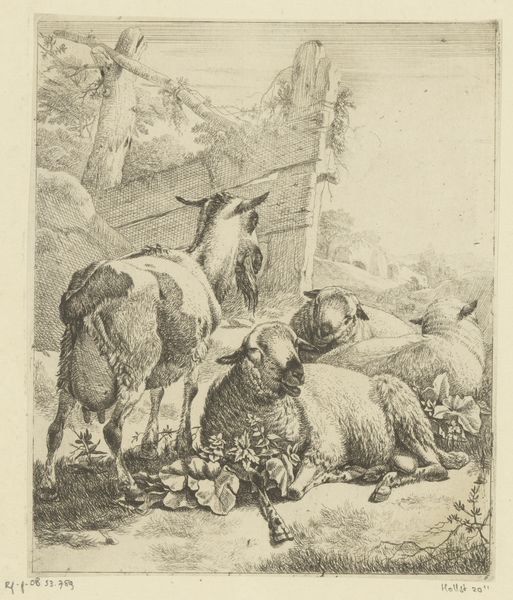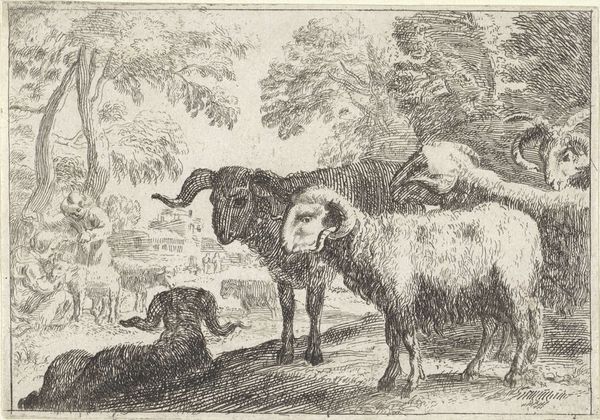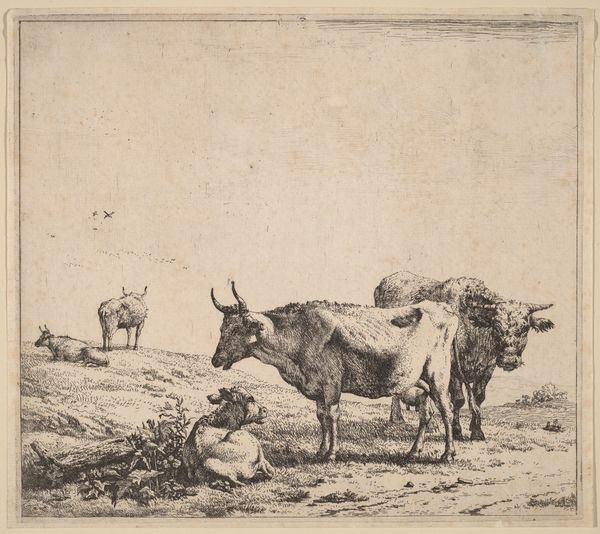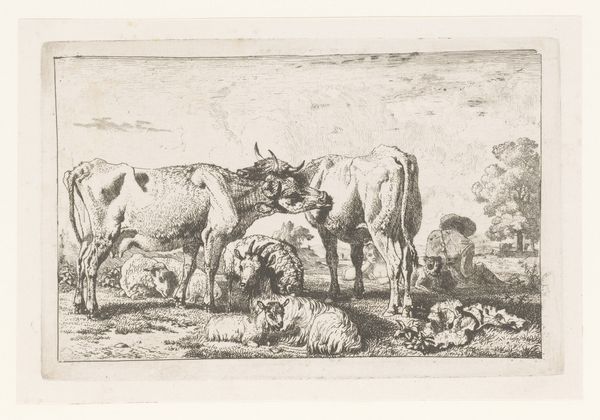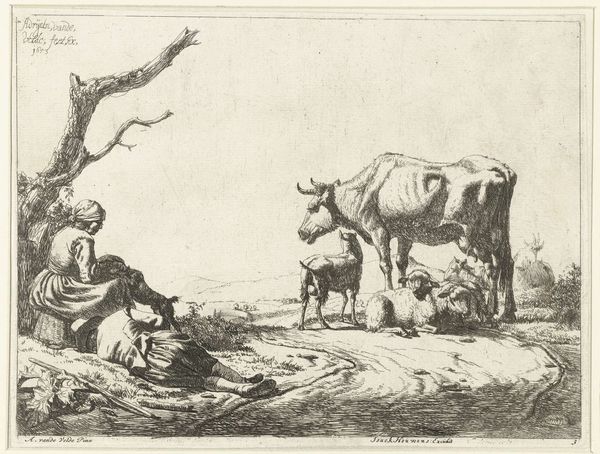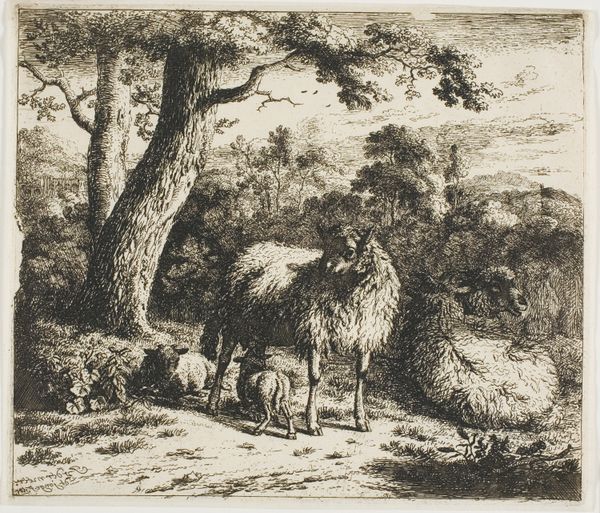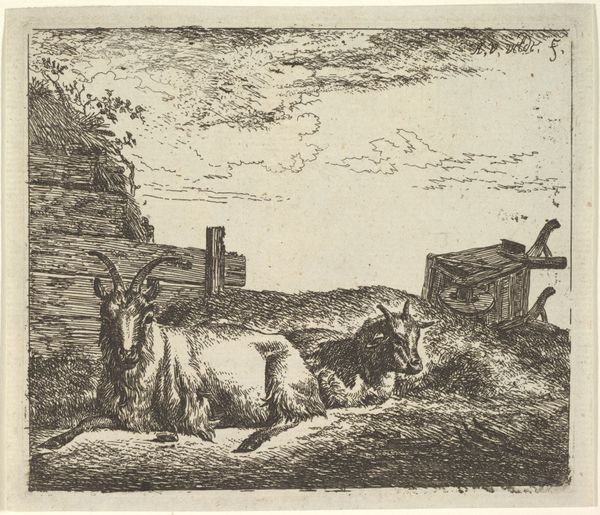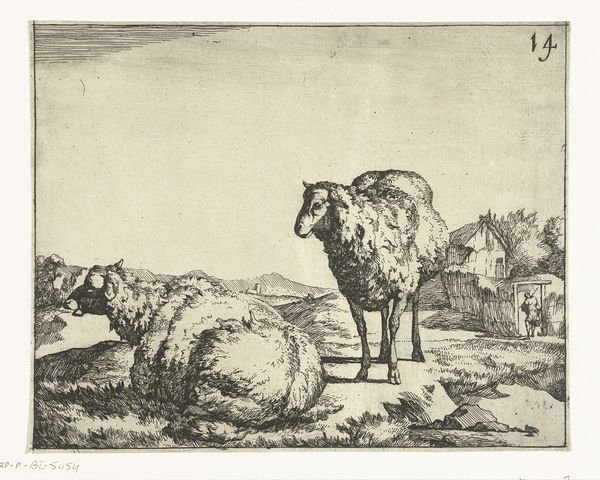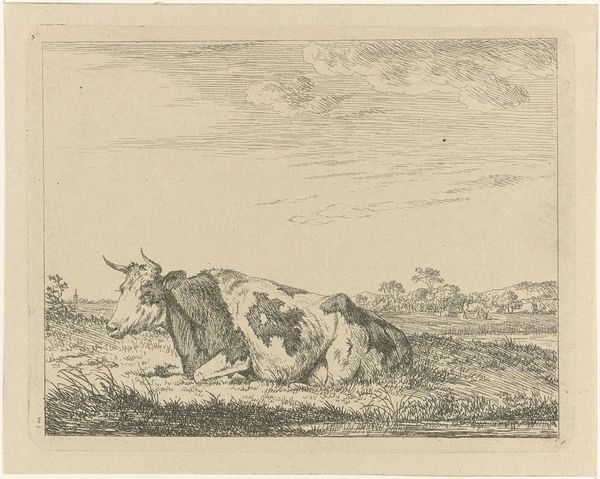
print, etching
#
dutch-golden-age
# print
#
etching
#
landscape
#
figuration
#
genre-painting
Dimensions: 118 mm (height) x 141 mm (width) (bladmaal)
Editor: We’re looking at “Fem får” or "Five Sheep," an etching by Jacob van der Does, from around 1650. The sheep are lovely, but the lines in the work are very loose, almost sketch-like. What elements stand out to you? Curator: Note how the artist constructs depth through varying line weights and density. The foreground sheep are rendered with darker, more pronounced lines, lending them visual weight, while the barn and distant figures employ lighter, more ephemeral strokes. This careful modulation creates a spatial recession within a monochromatic field. Editor: I see what you mean. It's all line and contrast! But the building looks incomplete somehow... Curator: The apparent incompleteness directs our attention to the artist's mark-making. The barn, though not fully delineated, functions as a structural counterpoint to the organic forms of the sheep. Observe the geometric precision versus the curvilinear masses; do you notice any tensions that arise? Editor: The sharp lines of the building against the fluffy sheep is a stark contrast. And I can almost feel the texture of their wool! Curator: Exactly. Focus also on the strategic placement of the sheep within the composition. Their arrangement, seemingly casual, directs the viewer's gaze across the pictorial plane. Consider the role of negative space. How does it contribute to the overall balance and rhythm of the etching? Editor: It’s interesting to see how the placement makes such a difference in something so simple. I’ll look at art differently from now on. Curator: Considering the composition as a whole, each formal element—line, form, space, and texture—works together. Attending to the artist’s strategic orchestration offers valuable insights.
Comments
No comments
Be the first to comment and join the conversation on the ultimate creative platform.
